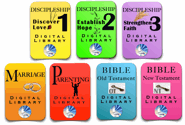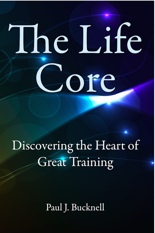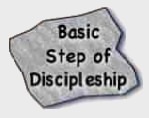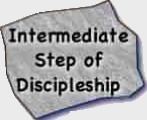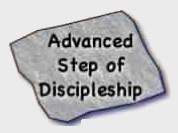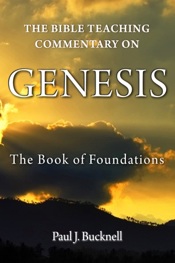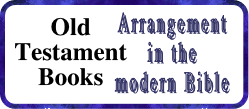
The Chronological Book Order Chart
English Old Testament Bible
Paul J. Bucknell
Purpose: Graphically show the Old Testament (OT) chronological Bible book order. Click here to see the Hebrew Bible book order.
Chronological Book Order Chart
English Old Testament Bible
Click chronological chart for bigger chart.
CHRONOLOGICAL ORDER OF THE OT BOOKS
The English(1) OT Bible is separated into four sections according to emphasis rather than time sequence. The Hebrew canon is differently organized, an important thought to remember. Keep the above chart as a learning tool. The English Bible book order is not the ‘biblical’ way. Other than the Law being the first five foundational books, there seems to be no ‘biblical’ order. The New Testament follows the same lack of clear organization.
-
The The OT Law is the same as the Torah or Pentateuch and stands as a foundation for all the other OT books, including the New Testament. Jesus interlinks the Old and New Testaments.(2) God established the Law to define the foundational terms for His relationship with His people. This is the reason the five books of Moses, the Law, are placed on the bottom of the chart. The Law contains the Old Testament covenant (or simply Old Covenant), in contrast to the New Covenant. The Law, though includes five books Genesis, Exodus, Leviticus, Numbers, and Deuteronomy, the Jewish people saw them as one. They set forth two major themes:
- God cares for and responds to man’s needs.
- God has expectations for man in both the ways he conducts his relationship with God and others.
-
The twelve Historical Books chronologically continue the sequence in the Law. The Book of Joshua, the conquering of Canaan, necessarily follows Deuteronomy, the charging and equipping of God’s people before entering Canaan. According to their common purpose, the historical books are grouped together carefully describing how God variously responded to His people depending on their responses to His Law. . The historical books are commonly separated into three sections:
- Pre–Kingdom Era.
Joshua, Judges, and Ruth recount the times before the Israelites insisted on gaining an earthly king like the other nations. - Kingdom Era
The Kingdom Era included six books: 1 & 2 Samuel, 1 & 2 Kings, and 1 & 2 Chronicles. They describe both the united kingdom period as well as the divided kingdom period. The southern (Judah) and the northern (Israel) comprised this divided Israel (also the name of the whole people of God). Each kingdom possessed its king and formed its own history on how they responded to the Lord. Assyria captured the northern kingdom, Israel, in 721 BC while Babylon seized the southern kingdom, Judah, in 586 BC. Although Judah with the temple appeared more faithful to God, she shared the same sins as the northern kingdom and likewise as taken capture.
- Post–Kingdom Era
The three post-kingdom historical include Ezra, Nehemiah, and Esther. Seventy years after Babylon captured Judah, the Lord marvelously orchestrated the return of God’s people back into the Promised Land. During this time, they had no king and focused on survival, building the wall around Jerusalem and rebuilding the temple.
- Pre–Kingdom Era.
-
The five David and his son, Solomon, wrote most of the five Poetical Books: David and his son, Solomon, wrote most of the five Poetical Books: Job, Psalms, Proverbs, Ecclesiastes, and Song of Solomon. The Book of Job describes the period of Genesis, before the calling out of Israel. Study the Book of 2 Samuel to understand better the authors, David and Solomon, and their circumstances in which they relate the inner and outer struggles God’s people face as they live or do not live by God’s law.Ecclesiastes, for example, depict Solomon straying away from God in his later years. Some include Jeremiah the Prophet’s book, Lamentation, as a poetical book, but I included it with the prophetical.
-
The Prophetical Books are chronologically separated into three distinct chronological periods according to their exile or captivity.
- Pre–exilic period. Most of the prophetical books took place in this pre–exilic period before Judah and Israel were taken captive, including: Isaiah, Jeremiah, Lamentations, Hosea, Joel, Amos, Obadiah, Jonah, Micah, Nahum, Habakkuk, and Zephaniah. These prophets challenged God’s people and some nations to return to the LORD as the Law stated, lest the judgments written in the Law would take place leading to their captivity. These twelve books share the background of the 2 Kings period.
- Exilic– period. Only Ezekiel and Daniel describe events during the time God’s people were hostage in foreign lands. They held great hope for God’s people that God had not forsaken them but would restore them.
- Post–exilic period. Haggai, Zechariah, and Malachi describe the Jewish exiles’ struggles after they returned to the land. The northern kingdom, known as The Lost Tribes, was taken to Assyria and not heard from again. Only a remnant of Judah returned from Babylon to inhabit the land.
There are other ways to view the prophets, such as the major prophets (longer books—four of them) and the minor prophets (shorter books—twelve of them) or the place of their recipients (i.e., north or south kingdom, other countries).
-
Chronological Perspective of the Old Testament
This chronological perspective of the Old Testament helps us understand the background and circumstances of each Bible book. Every Christian should have a general understanding of the Old Testament context and a good understanding of at least several of the Old Testament books. See our Old Testament’s historical and chronological map to become more familiar with the Old Testament history!
Excellent Bible reading programs (e.g.,Bible app) are now available. We admit it might be hard to get through some books, but just read them a bit quicker and capture one thought for your personal life that day. By regularly referring to the above chart one can keep from getting lost, quickly gaining each book’s circumstances and purpose. For example, David wrote many Psalms. Some of them depict difficult times; they arose from David’s own trying life situation. We suggest that the Old Testament be read once a year.
Free OT and NT Chronological Bible Book mark!
Check out out chronological Bible book order and traditional Bible book order free bookmarks. Complete with and OT and NT chronological chart on the back!
Study Questions on the Chronological OT Bible
1. What is the difference between the Old Testament’s chronological order and the general sequence found in a Bible?
2. What five books comprise the Law? Name your favorite and why.
3. When do the historical books begin and end?
4. What are the three chronological times to categorize the historical books or the prophets?
5. What period did most of the Old Testament prophets write?
6. When did the Book of Job take place? How do you know?
7. Why are the poetical Bible books so helpful in one’s life?
8. How much of the Old Testament have you read? Make a plan to read it through (perhaps again).
9. What is your favorite book of the Old Testament? Why?

The Extent of the BibleWhy aren't other books part of the Bible?
The Bible's Challenge | Transformation | Canonization| Extent | Inspiration | Reliability | Relevance | Version | Download
|
OLD TESTAMENT ARTICLESIncluding many maps and diagrams |
||
| OT Survey Chronological Chart of OT Books Hebrew Bible Books/ Canon Old Testament Geographical Historical Map OT Law, Pentateuch Genesis Index Introduction to Genesis Outline and Genealogies Unified Themes of Genesis Genealogy Time Chart: Genesis 5 Genealogy Time Chart: Genesis 11 Ancient History - Chronology Tracing the Two Seeds Of Mankind Genesis 1:1-2:3 The Worship of the Creator The Meaning of Creation Creation Lessons on God. God and the World's Religions Genesis & Birth Control Genesis 2:4-17 Preparation for Man (Genesis 2:4-6) Creation of Man (Gen. 2:7, 1:26-27) Purpose for Man (Genesis 2:8-17) Good and evil from Genesis 2 Genesis 2-9 Genesis 2:18-25 Great Marriages Happen! Genesis 2:18-25 The Foundation of Marriage Genesis 2:24 Leave & Cleave: Practical thoughts Genesis 5: Time chart of patriarchs (1) Genesis 5: Enoch's Secret Word: Methusaleh (1) Genesis 6:1-3 Finding a Wife the wrong and right way Genesis 12-22 Abraham's Life Genesis 12.1 The Call Genesis 12.2-3 The Promises Genesis 12:10-20; 20; Place Detour: Genesis 12.13-14 Person Detour Genesis 15 The Means Genesis 16-17 Procedure Detour Genesis 16,17,22 Consequences of failing to wait for God Genesis 22 The Testing Genesis 25-37 Jacob's Life Influence of Sin God and Man's Sin Understanding Man's Sin Nature Understanding Jacob's Sins Genesis 50:15-26 Grace to Freely Forgive (Joseph) Exodus Exodus 3:14 Discussion of "I am" and Yahweh Exodus 20:5-6 Influence of Parents Exodus 33:7-11 Building Excitement for Devotions Exodus 33:12-19 Biblical Word Study on 'Grace' Numbers Numbers Overview, Intro, Themes (The Lord's Battle) Deuteronomy Deuteronomy 22:5 Gender Culture Sins |
OT Historical Books Joshua Introduction, Outline and Purpose of Joshua Historical/Geographical Map of Joshua Map of Canaan before the Conquest Joshua & Resolving Marital Conflict (many passages) Joshua 1:8 Diagram of Meditation's Importance Judges Background Outline Theme (Cycle of Decline and Revival) Judges 2:10-19 Evaluating our Spiritual Lives Judges 13-16 Samson 1 Samuel 1 Samuel 16:6-13 Full-time Ministry 2 Chronicles/Ezra 2 Chronicles 6-7 Prayer & Revival 2 Chronicles 6:14-42 King Solomon's prayer 2 Chronicles 7.12-15 God's Promise for Revival 2 Chronicles 7.14 Revival P A R (3) 2 Chronicles 20:1-30 Prayer: Study Questions Ezra Ezra Overview, Ezra Outline Ezra Questions Ezra 9-10 Marrying a Non-Christian Ezra 9:8-10 At the Heart of Revival Nehemiah Overview of Nehemiah Historical Picture of Nehemiah and Ezra Complete Nehemiah series (21 sermons+)
|
Micah
Micah Themes & Background Micah Outline Summary Micah 4:1-5 Mountain of the Lord Questions Micah 4:11-5:5 Commentary Zephaniah study - Call to Revival Gathering Before His Throne Relevance to our Lives | Historical | Overview A.Voluntarily Gathering 1:1-2:3 Questions | Notes | Outline B.Willingly Gathering 2:3-3:13 Questions | Notes | Outline C. Gladly Gathering 3:14-3:20 Questions | Notes | Outline Haggai studies: Rebuilding the Temple Haggai Introduction Haggai 1:1-11 Notes Questions Haggai 1:12-2:9 Notes Questions Haggai 2:10-23 Notes Questions Discovering Effective Leadership in Haggai Overcoming Discouragement and Depression in Haggai |
info@foundationsforfreedom.net
Scriptures typically quoted from the New American Standard Bible unless noted:
(C) Copyright The Lockman Foundation 1988
